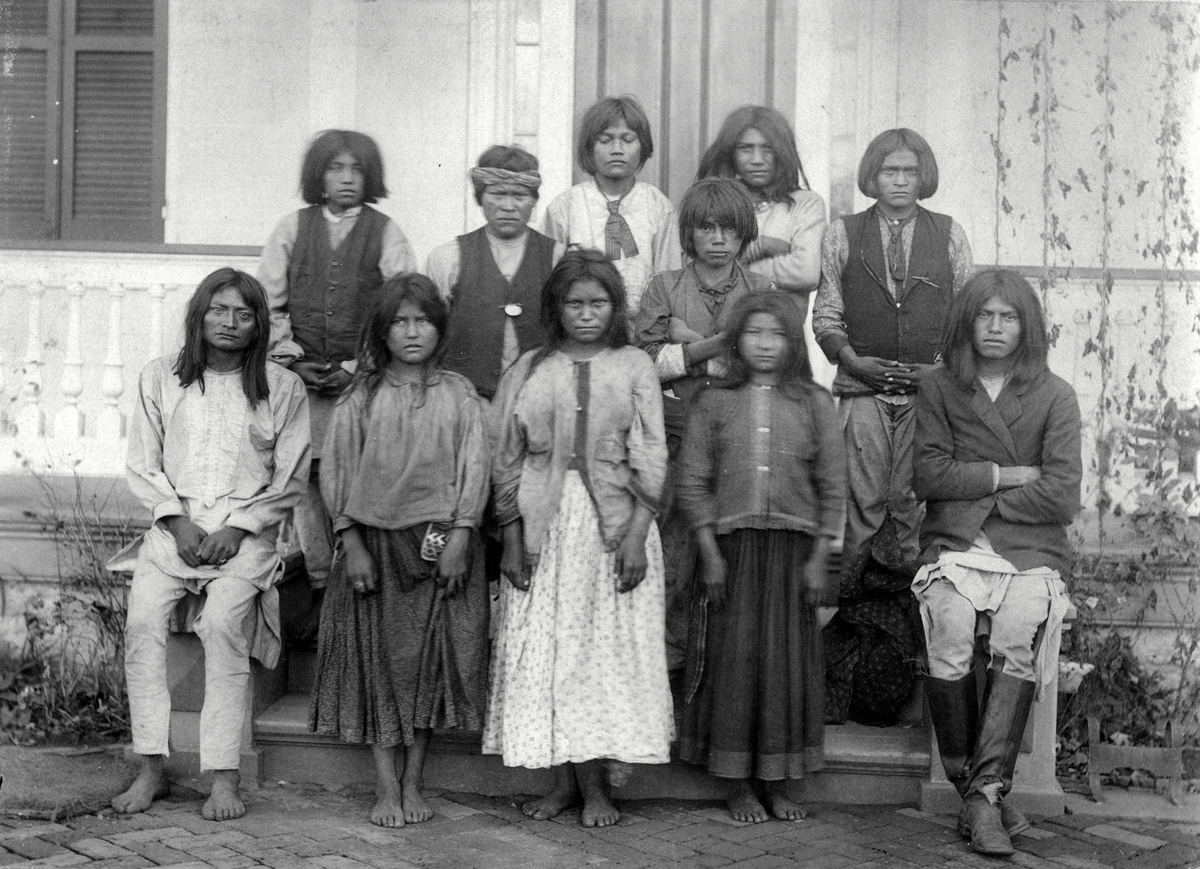
In an article first published on Religion News Service, BRIDGET MOIX, general secretary of the Friends Committee on National Legislation, says that there are “gaping holes between our country’s traditional narrative and the realities of how our nation was built and who paid the costs”…
United States
Via RNS
Like many white Americans, I grew up learning a relatively neat and sanitised version of our country’s past. The depictions of history taught in my Ohio Catholic school emphasised our national triumphs, glossed over our shortcomings and depicted America as a chosen nation grounded in equality and freedom for all.
But the more we learn, the more we see gaping holes between our country’s traditional narrative and the realities of how our nation was built and who paid the costs. As painful as it can be, we simply cannot create a more just nation without filling in those gaps with the complicated truth of our past.

Native American (Chiricahua Apache) boys and girls pose outdoors at the Carlisle Indian Industrial School in Carlisle, Pennsylvania, after their arrival from Fort Marion, Florida, in November 1886. PICTURE: JN Choate/Creative Commons
We were reminded of this in May, when the US Department of the Interior released the first volume of the Federal Boarding School Initiative’s long-awaited investigative report. The initiative, first created by Interior Secretary Deb Haaland in June 2021, was established to document the harms caused by Native boarding schools operated throughout the country in the 19th and 20th centuries.
As the report makes clear, those harms were immense – and their impact continues today.
“[T]he more we learn, the more we see gaping holes between our country’s traditional narrative and the realities of how our nation was built and who paid the costs. As painful as it can be, we simply cannot create a more just nation without filling in those gaps with the complicated truth of our past.”
Between 1819 and 1969, across 37 states, there were 408 schools and more than 1,000 other institutions involved in educating Native children, including day schools, orphanages and asylums. These institutions were sponsored by the federal government and administered by a number of Christian denominations, including my current faith community, Quakers.
The “assimilation” tactics employed at the schools were brutal. They included renaming children with English names, cutting their hair, prohibiting the use of Native languages and religions, extensive military drills and manual labor. Abuse was commonplace, including the use of solitary confinement and the withholding of food.
A number of these schools were established and run by the Religious Society of Friends. In an 1869 letter, Edward Shaw, a Friend from Richmond, Indiana, wrote that Quakers aimed “to protect, to Civilize, and to Christianize our Red Brethren.” Charles Eastman, a Lakota physician, described the treatment he experienced at the Santee School, a Quaker-run institution in Nebraska: “We youthful warriors were held up and harassed…until not a semblance of our native dignity and self-respect was left.”
Beyond cultural genocide, the schools also played a key role in the broader effort to grab land from Native Americans. The report found the schools would discourage tribal agricultural practices, which required less land, in favor of Western practices. To support these practices, tribal members were then encouraged to purchase goods on credit. When they fell into debt, they had no option but to cede lands to the US as payment.
It was a pernicious and evil system. Yet, until this new report, there was little governmental interest in researching and addressing this devastating period. The creation of the Federal Indian Boarding School Initiative is a strong start, but far more remains to be done.
We rely on our readers to fund Sight's work - become a financial supporter today!
For more information, head to our Subscriber's page.
For one, Congress must build upon the work done by the Boarding School Initiative. Lawmakers can do so by swiftly passing the Truth and Healing Commission on Indian Boarding School Policies in the US Act (HR 5444/S 2907), which will be marked up this month. If enacted, it would establish the first formal commission in our history to investigate and address the harms committed – and critically, ensure progress isn’t derailed by any change in administrations.
We continue to advocate for this bill in solidarity with Indigenous partners like the National Native American Boarding School Healing Coalition and the National Congress of American Indians.
This reckoning must also extend beyond the government. Faith communities, including Quakers, were undeniably complicit in the historic trauma of the boarding school era. We have a moral obligation to share records and accounts of the administration of these schools as investigations continue. In the Quaker community, which does not have a centralized governing body, individual meetings have begun taking on this responsibility.
The truth is we cannot undo the harm caused by these institutions. It is a permanent stain on our history. But by fully acknowledging the sins of the past, we can begin taking steps to chart a more just relationship with Native communities nationwide. It’s time, at long last, to shine a light on this dark chapter of American history and take the next steps toward reckoning and repair.

Bridget Moix is the general secretary of the Friends Committee on National Legislation and leads two other Quaker organisations, Friends Place on Capitol Hill and the FCNL Education Fund.





